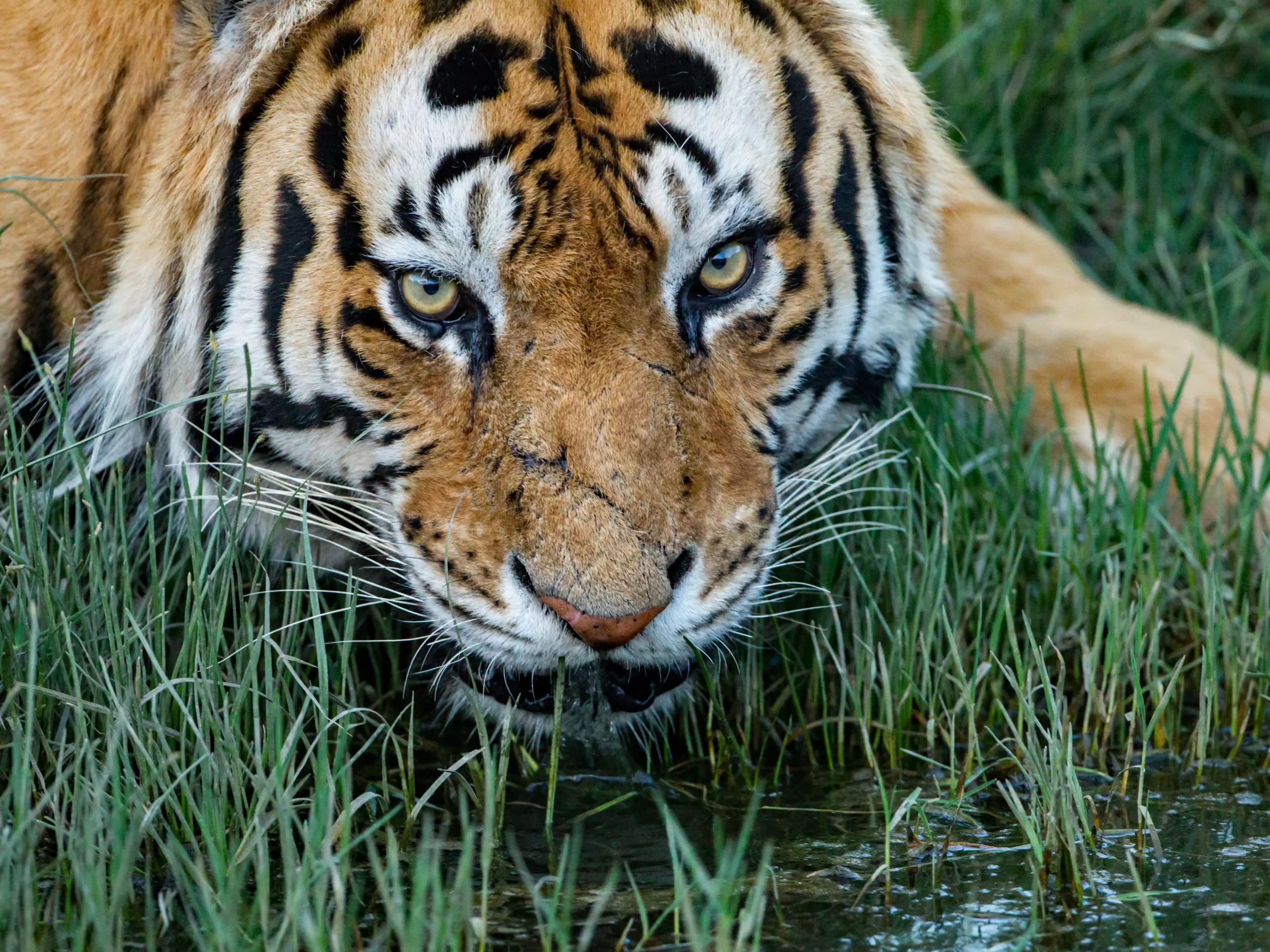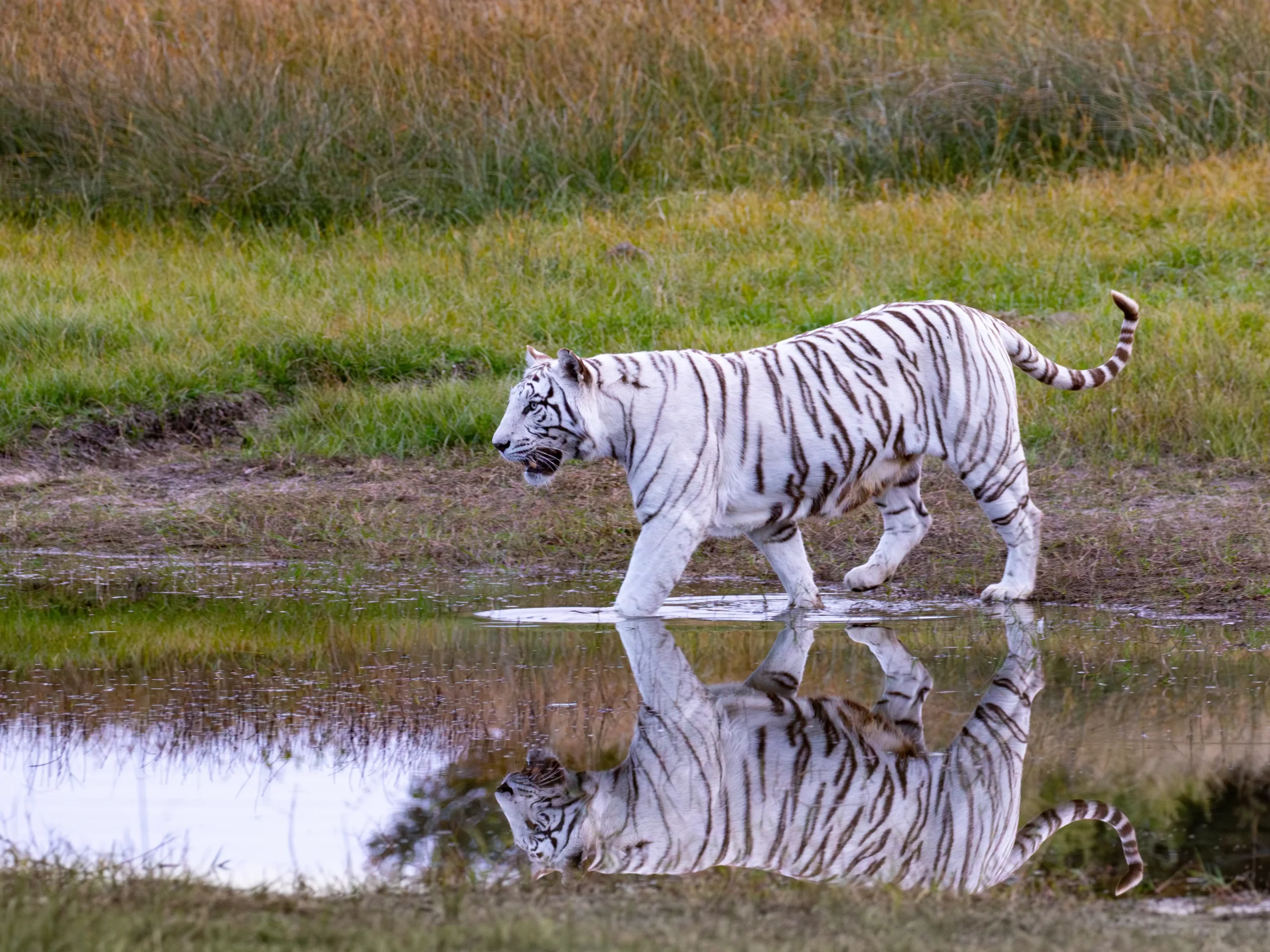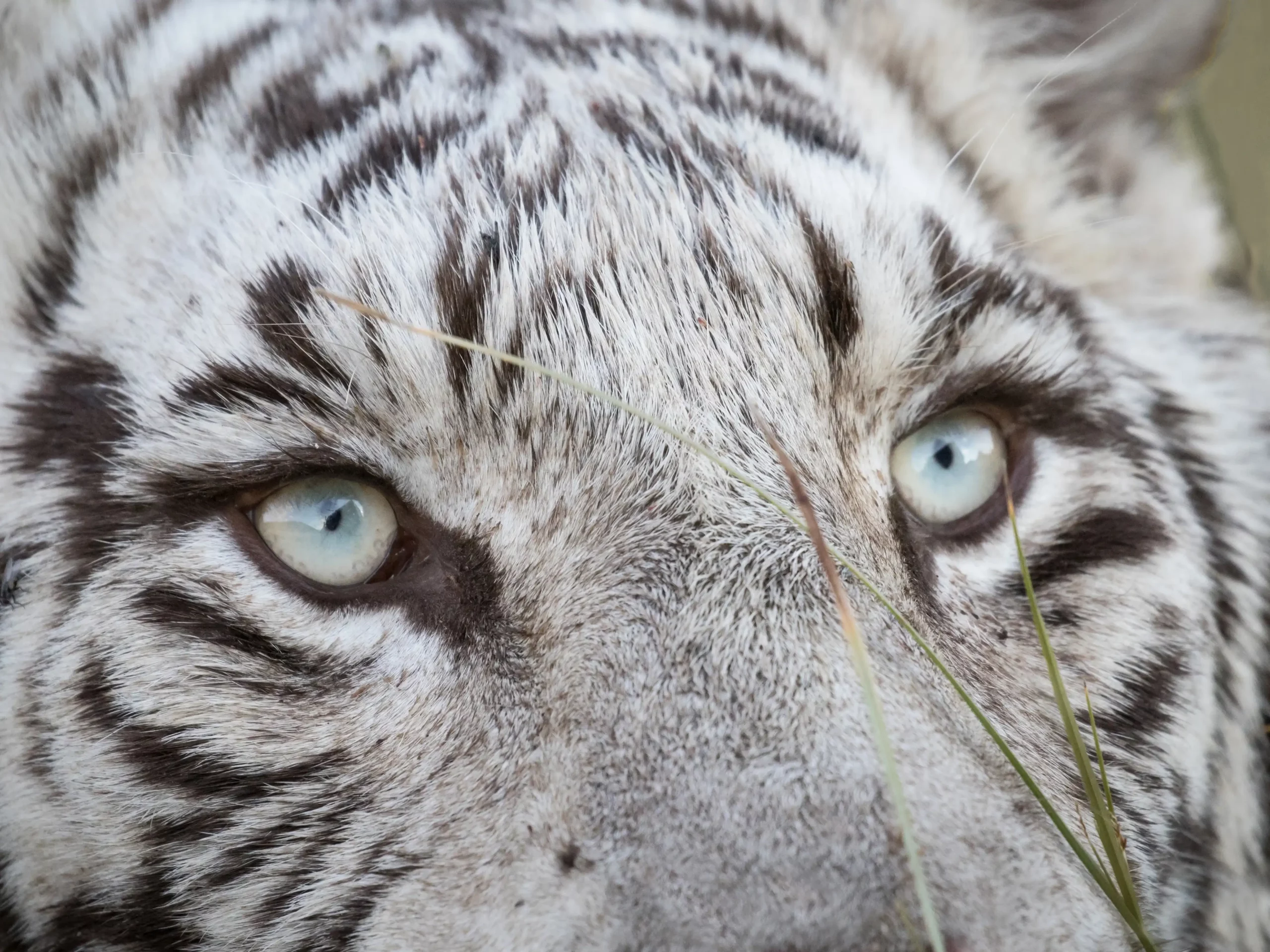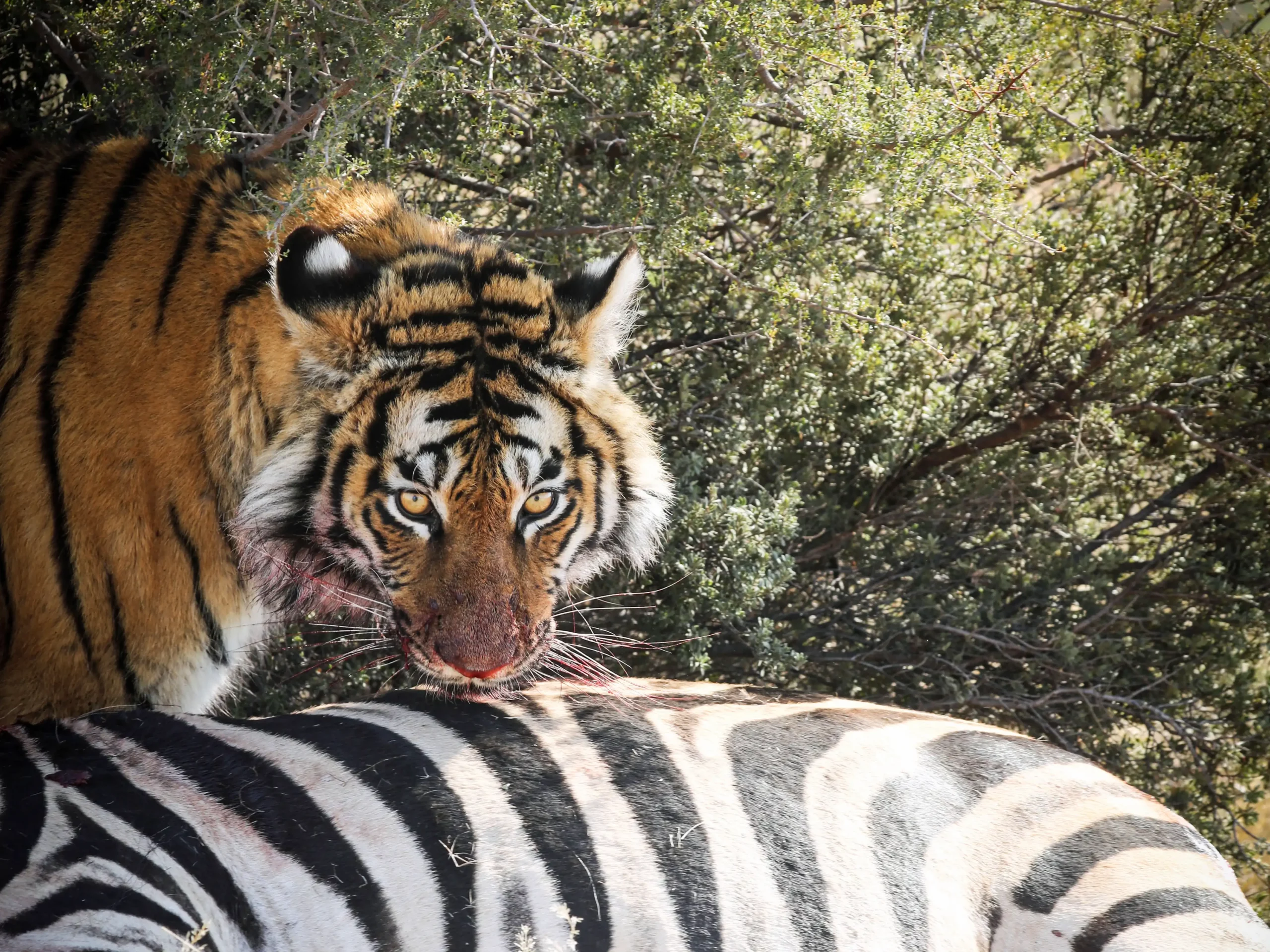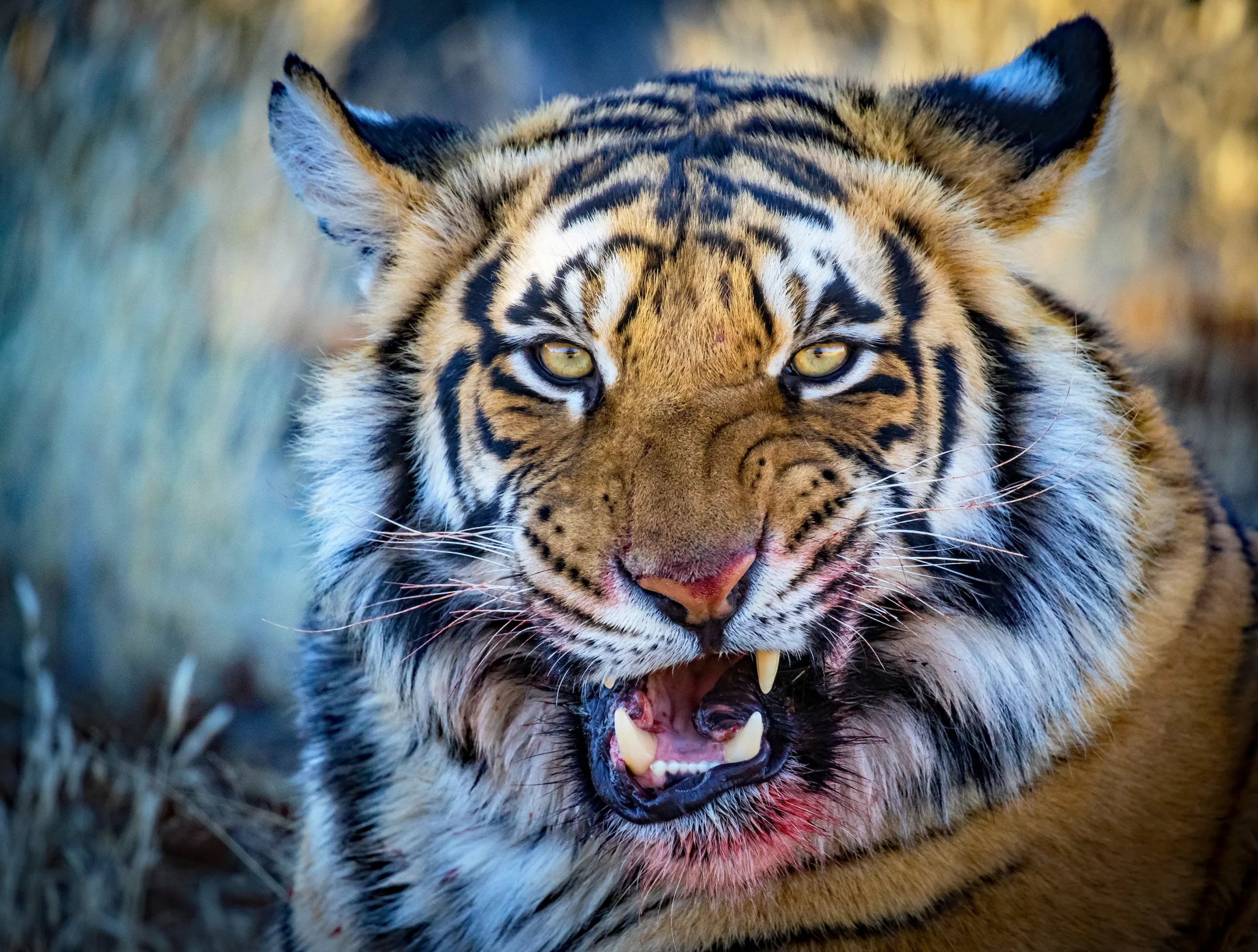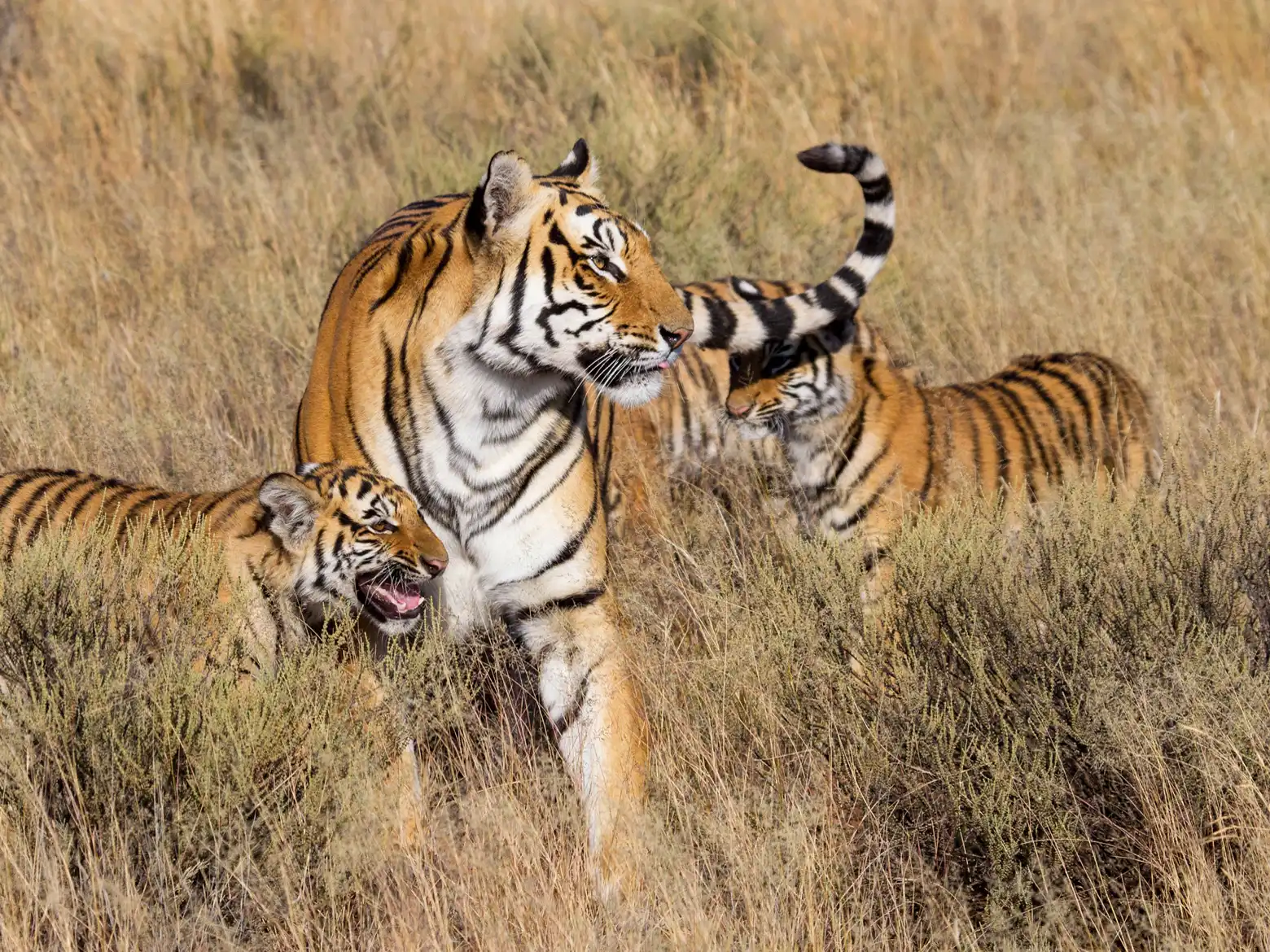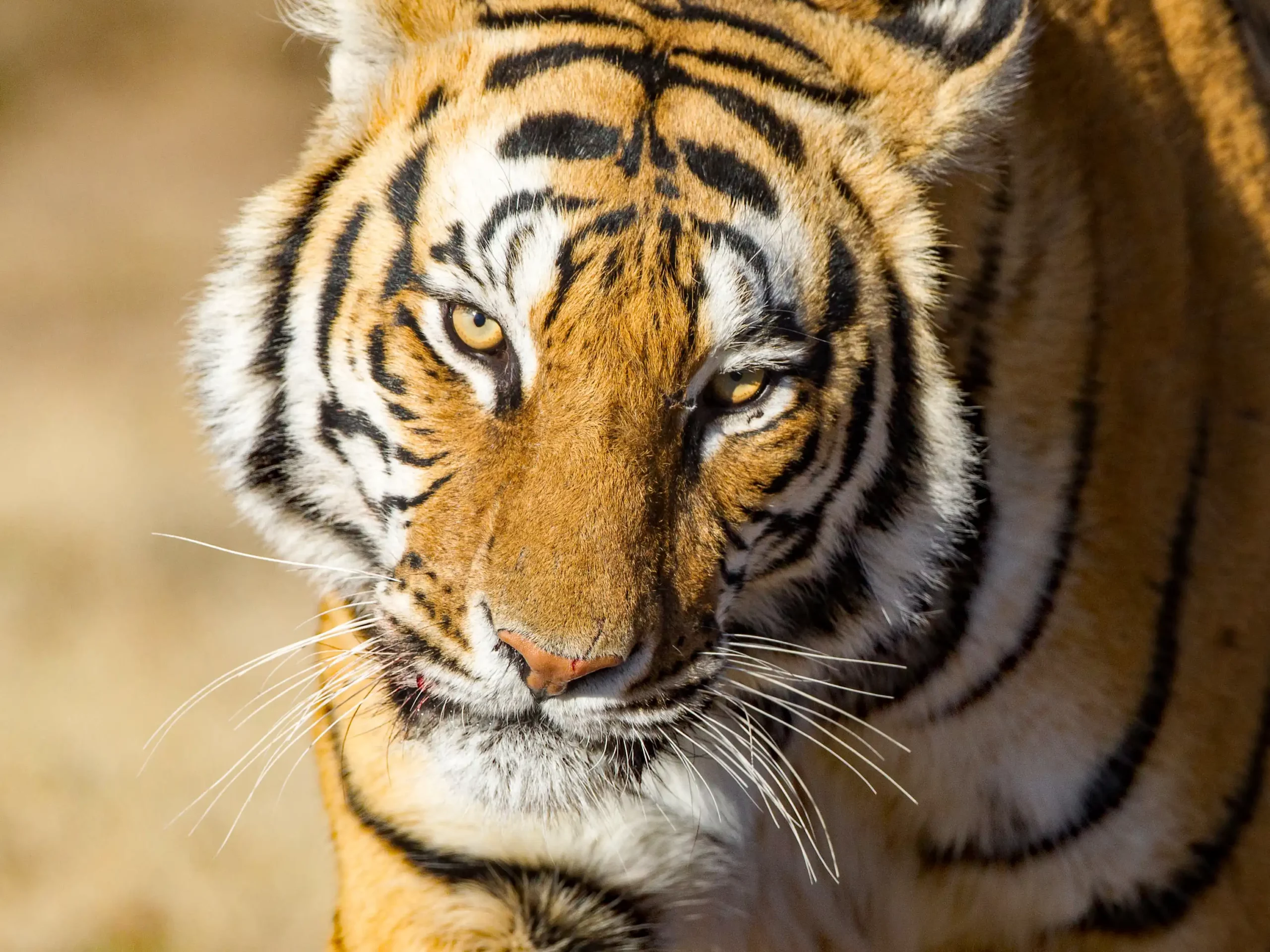The majestic tiger, an apex predator and iconic symbol of strength, freedom and wild places, is sadly facing extinction with less than 5500 tigers left in the wild, and 13,000 tigers living in captivity in Asia and the US alone.
The Extinction Crisis
While global efforts like the 2010 TX2 tiger conservation plan has shown progress, for some tiger species, others like the Sumatran and South China Tiger still have very few wild tigers, and most are now held in captivity, to preserve their genetics. Experience and knowledge of how to rewild and expand populations of wild tigers are vital for the species’ survival.
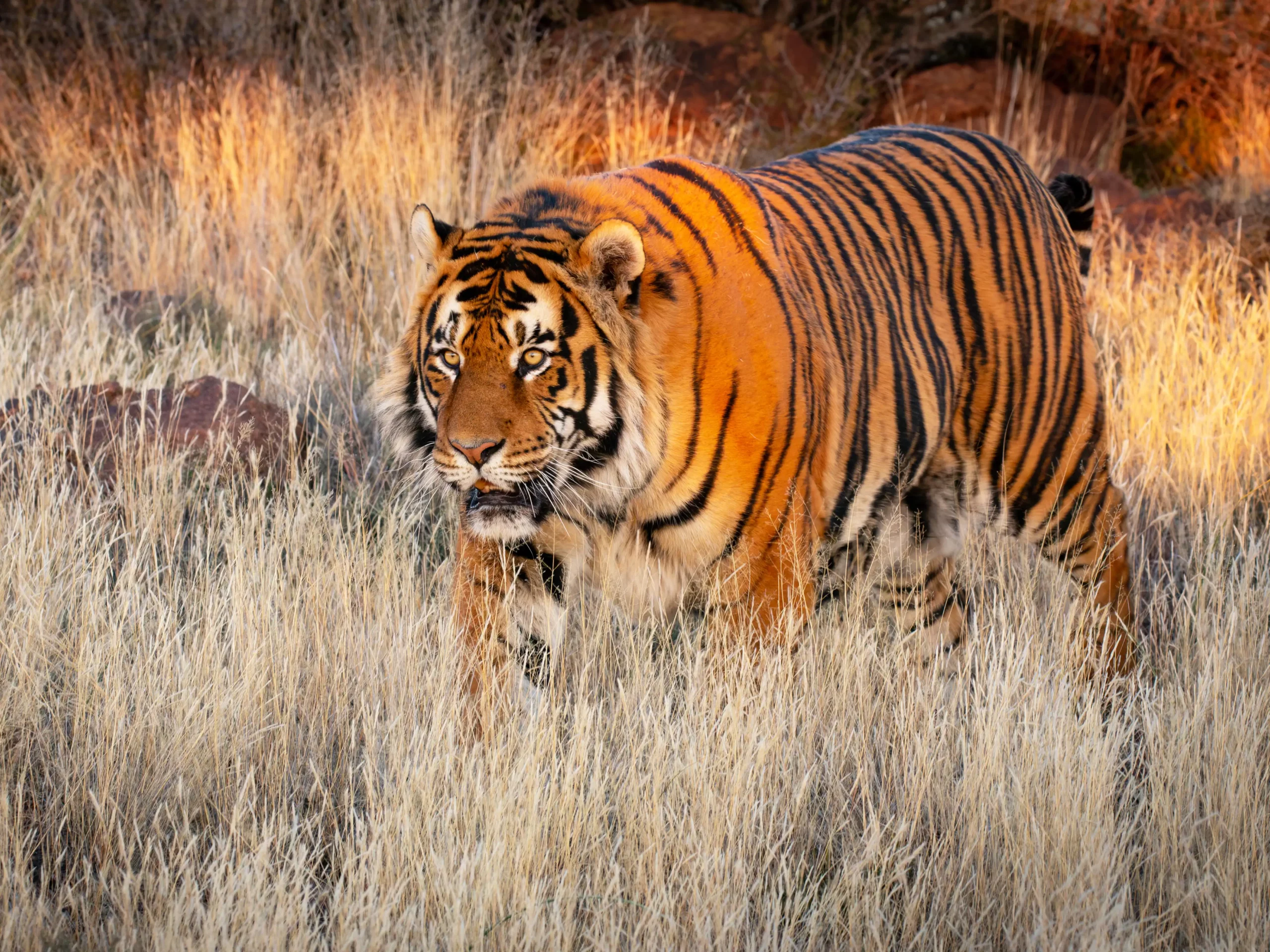
Re-Wilding Tigers
The core competency of Tiger Canyon is to rewild captive-born big cats and create a natural environment for them to thrive, our grand purpose is to contribute meaningfully to global efforts to save the endangered wild tiger from extinction. As a respected ex-situ conservation project, our objective is to bring about awareness of the plight of the tiger and pioneer a sustainable model of what the next-generation of game reserves might look like; one which is dedicated to endangered animals no matter where their historic geographic home range is.
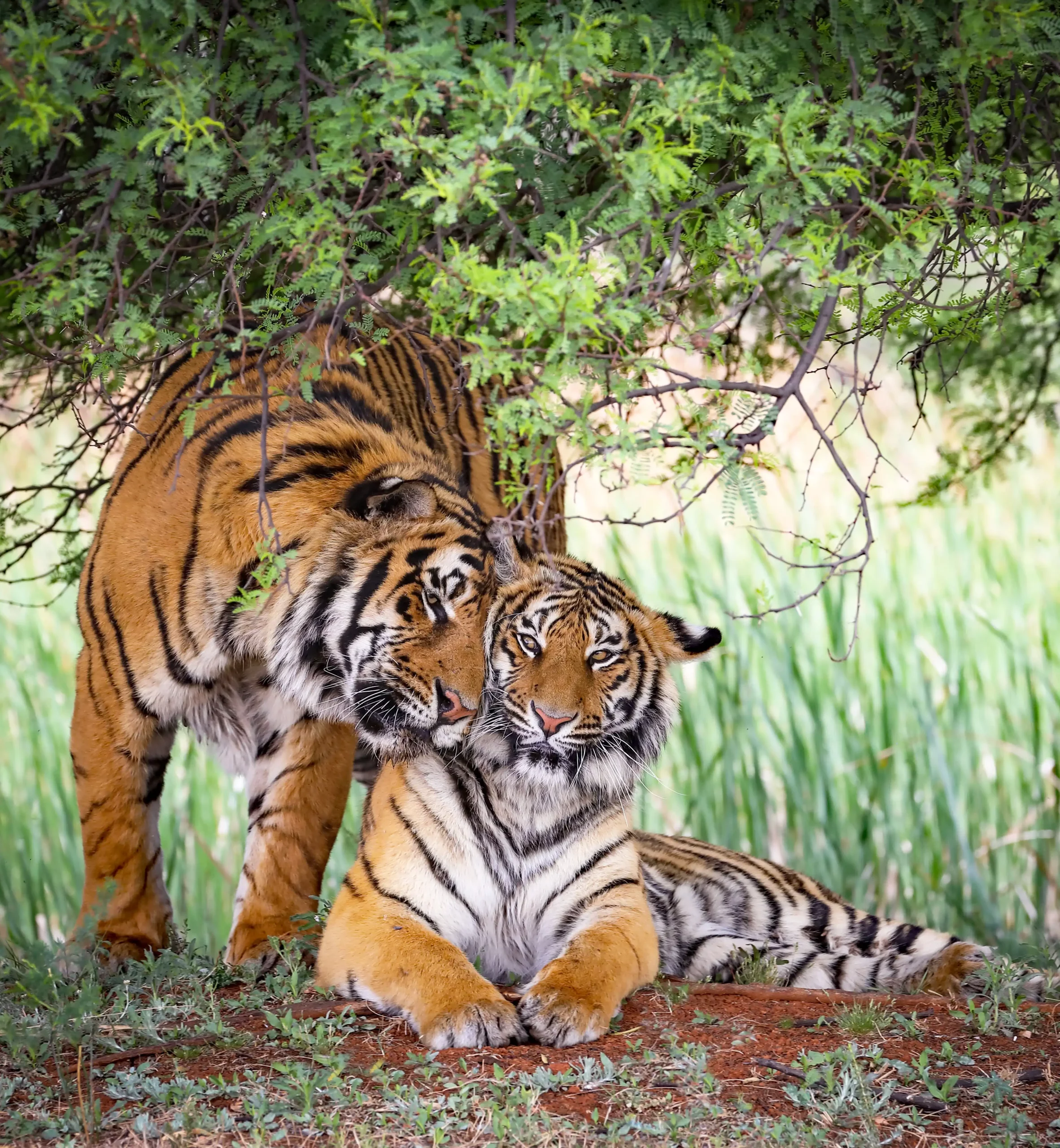
Why Africa is Helping to Save the Tiger?
In Asia tiger numbers have dwindled by 95% in the last 100 years due to habitat loss from human encroachment, poaching, and a lack of breeding corridors.
Wild Tigers compete with ever increasing human population, China and India have approximately 150 people per Km2 and hold 17 and 18 % of the world’s human population. In comparison South Africa has 48 people per Km2 and 1% of the global population. At Tiger Canyon in the Kopanong area we have just 3 people per Km2. A shortage of protected wild spaces is the biggest threat to tigers.
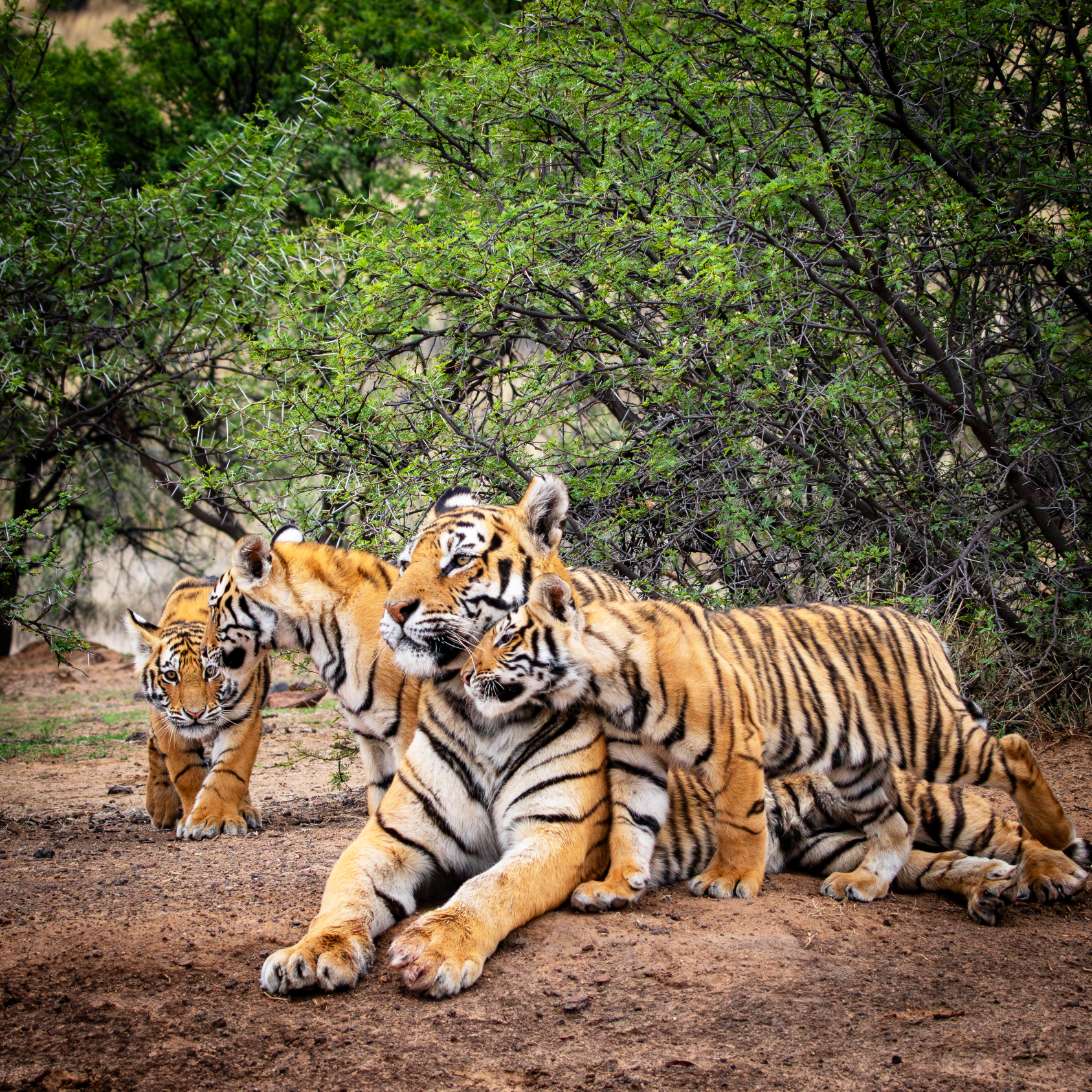
South African Game Reserves
South Africa has ample suitable land for re-wilding projects, especially in areas where domestic farming is unprofitable, and wildlife thrives.
Africa has a well established eco-tourism industry, run by private enterprise which ensures successful game reserve management. In Asia wildlife cannot be privately owned, all wild Asian tigers are owned and managed by governments.
Game Reserves and National Parks in South Africa are fully fenced to protect humans and wildlife. In Asia the culture is very different, National Tiger parks are all unfenced, human conflict and poaching are difficult to manage and devastating to tiger numbers.
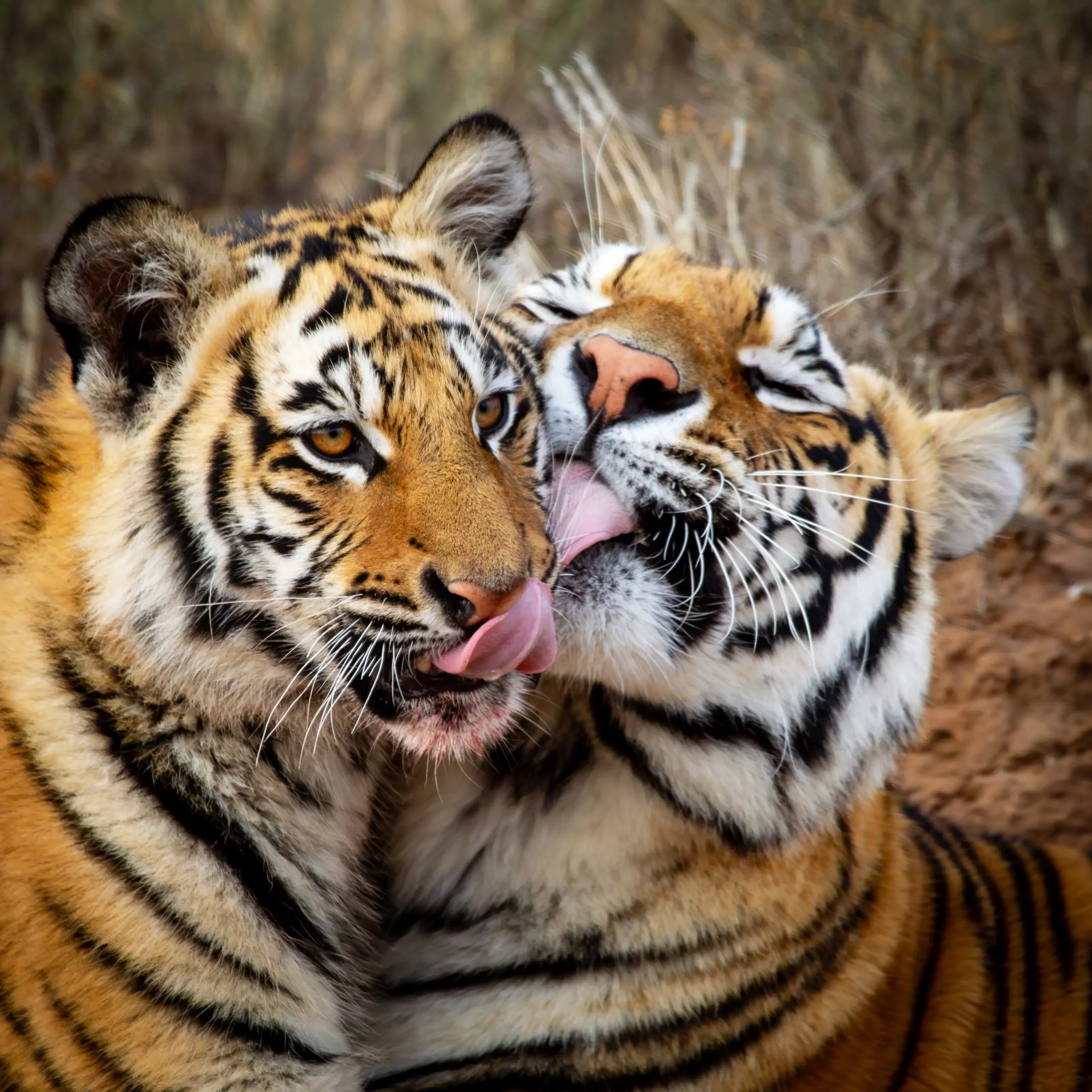
A Vibrant Safari Industry
There is a wealth of wildlife expertise and experience here in Africa, the Private Game Reserves and National Parks are vibrant and supported by thousands of safari tourists annually. An ideal location for an ex-situ, endangered big cat project to receive support and resources.
The reality of trying to save predators from extinction is that these animals will easily repopulate protected areas that have ample prey species to support them. If we are to save wildlife species it is time to unite and overcome political and geographic boundaries, and seek global solutions.
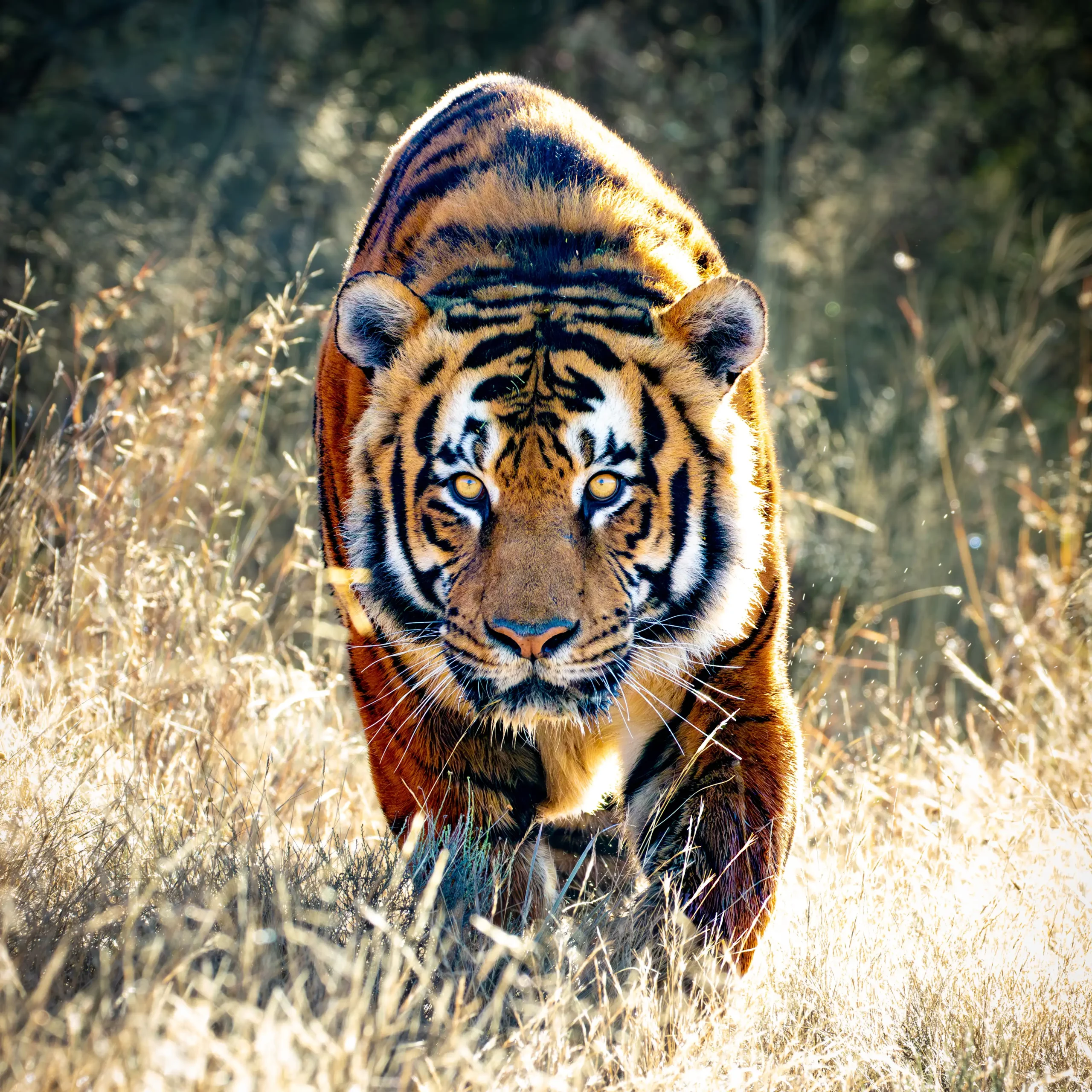
Tigers are irreplaceable. Their loss would be a tragedy for our planet. Tiger Canyon shows a new path forward. Join us in saving this magnificent creature.
Understanding Wild White Tiger Conservation
The White Tiger: A Natural Wonder
The white tiger is not a man-made creation, it is a rare genetic variation that arises from a recessive gene found within wild tiger populations. This genetic trait, known as leucism, results in the tiger’s striking white coat and light blue or green eyes. Unlike albinism, which causes pink eyes and pinkish paw pads due to a lack of pigmentation. This genetic mutation is not exclusive to tigers; it has also been observed in wild lion populations.
At Tiger Canyon, we take great pride in being home to the world’s only wild white tigers, where we focus on preserving this rare genetic trait within our normal orange colour tiger population. Our goal is not only to protect these remarkable big cats, but also to ensure the health and genetic diversity of the overall tiger population. By carefully managing the breeding of our white tigers with normal-coloured tigers, we aim to maintain the white gene while simultaneously enhancing the genetic strength and vitality of the broader tiger gene pool. This practice ensures that white tigers can be sustainably integrated back into the wild, while helping to prevent any negative impact on their genetic health.

Ethical Tiger Conservation
Many captive tigers are inbred, unhealthy, and contribute to the illegal trade in tiger parts. It’s crucial to support ethical conservation efforts that focus on protecting wild tiger populations and addressing the issues of captive tiger breeding. By understanding the true nature of white tigers and advocating for their conservation, we can help ensure the survival of this magnificent species.

Tiger Canyon not a zoo or a National Park, we are Private Game Reserve model that could be replicated, to give many captive born tigers the chance of freedom, and increase wild tiger populations globally.

